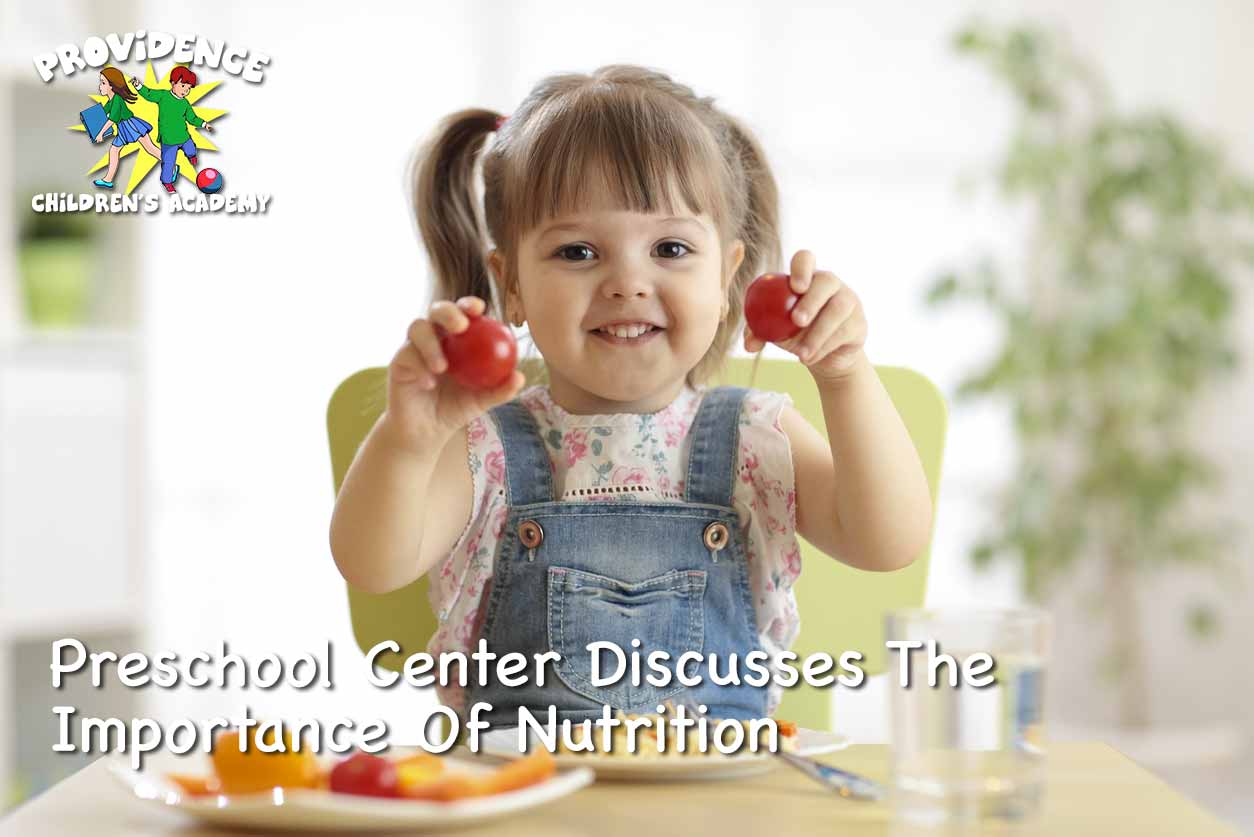
The way we eat influences our daily performance. Eating a well-balanced diet is important in adulthood but nutrition also plays an essential role in early childhood development. Before a child turns 5 years old, their bodies undergo significant changes. The foods preschool-aged children eat influence cognitive, physical, emotional and social development. For their brains and bodies to develop well, children need to eat foods that feed their young bodies and provide the nutrition needed at each stage of their development. Here we take a closer look at the nutrition your child needs at different ages.
Infants: Ages 0 to 12 Months
According to The American Academy of Pediatrics Committee on Nutrition, an infant’s primary nutrition should come from breast milk for the first 6 months of their life. Supplemented feeding can be introduced toward the end of the first year. Children that are not breast fed should consume iron-fortified formulas to promote healthy development. During the second six months of their lives, cow’s milk can be introduced to the child’s diet along with iron-fortified cereals, fruits, and vegetables. During this stage of the child’s life, they should be consuming foods that are good sources of Vitamin C and iron. Pureed vegetables, fruits, and meats that are rich in these vitamins can be introduced between months 4 and 7. Feeding your infant appropriate textures and brightly colored foods can stimulate an infant’s cognitive development and encourage healthy eating habits.
Toddlers: Ages 1 to 3 Years
Toddlers are always on the go and are constantly learning about the world they live in. The foods they eat should provide enough energy for their daily explorations. A healthy daily meal plan for toddlers should include at least:
- Grains Group (at least 6 servings per day)
- ¼ to ½ slice of bread
- 2 to 3 crackers
- ¼ to ⅓ cup cooked rice, pasta, or cereal
- ¼ to ½ bun, muffin, or bagel
- Fruits and Vegetable Group (at least 5 servings per
day)
- ¼ to ⅓ cup of cooked, canned, or chopped raw
- ¼ to ½ small fruit or vegetable
- ¼ to ⅓ cup of juice (no more than 4 ounces a day)
- Milk Group (at least 3 servings per day)
- ½ cup milk or yogurt
- ½ to 1 ounce of cheese (note: you do not have to give your toddler low-fat foods)
- Meat Group (2 servings per day)
- 1 to 2 ounces of lean meat, chicken, or fish
- 2 to 4 tablespoons dry beans and peas
- ½ to 1 egg
It is important to note that your toddler’s portion size is smaller than that of an adult. Parents are advised to provide their child with healthy options, regular mealtimes, and appropriate meal settings and not to force children to clean their plates. It is normal for a toddler’s appetite to change frequently. When healthy eating habits have been encouraged from a young age, children will let their parents or caregiver know when they are full.
Preschoolers: Ages 4 to 5 Years
Feeding fussy preschoolers can be difficult but there are ways to appease their curiosity with creative, healthy meals. At this age children can feed themselves and have a clearer idea of their likes and dislikes. A healthy meal plan should include the same food groups and servings as when they were toddlers, but the portion size should increase. A preschooler’s daily meals include:
- Grains Group (at least 6 servings per day)
- 1 slice of bread
- 4 to 6 crackers
- ½ cup cooked rice, pasta, or cereal
- ½ bun, muffin, or bagel
- Fruit and Vegetable Group (at least 5 servings per day)
- ½ cup of cooked, canned, or chopped raw
- ½ to 1 small fruit or vegetable
- ½ cup of juice
- Milk Group (at least 3 servings per day)
- ¾ cup of milk
- ¾ ounce of cheese
- Meat Group (2 servings per day)
- 1 to 3 tablespoons of lean meat, chicken, or fish
- 4 to 5 tablespoons dry beans and peas
- 1 egg
Poor nutrition can decrease cognitive abilities, slow reflexes and physical development in children. Making healthy eating a priority at a young age is essential for children’s well-being.
At Providence Children’s Academy, we have a holistic approach to early childhood development. Children are taught healthy eating and lifestyle habits in the hope that they will take these lessons into adulthood and become well-balanced adults. Infants, toddlers, and preschoolers are encouraged to eat nutritious meals at school.
Contact us today to find out more about how we encourage healthy eating at school.
